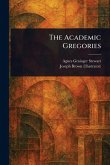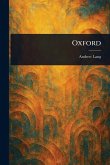William of Wykeham and His Colleges delves into the life and legacy of William of Wykeham (c. 1320 â" 1404), Bishop of Winchester and twice Chancellor of England. This book explores Wykeham's significant contributions to English education through his founding of Winchester College and New College, Oxford. It details the historical context, architectural achievements, and the enduring impact of these institutions on the landscape of British education and society. Mackenzie Edward Charles Walcott meticulously chronicles Wykeham's career and provides insights into the foundation and early development of these pivotal educational establishments. This work offers a detailed exploration of a key figure in English history, whose influence is still felt through the institutions he created. A valuable resource for historians, educators, and anyone interested in the history of education and the life of William of Wykeham. This work has been selected by scholars as being culturally important, and is part of the knowledge base of civilization as we know it. This work was reproduced from the original artifact, and remains as true to the original work as possible. Therefore, you will see the original copyright references, library stamps (as most of these works have been housed in our most important libraries around the world), and other notations in the work. This work is in the public domain in the United States of America, and possibly other nations. Within the United States, you may freely copy and distribute this work, as no entity (individual or corporate) has a copyright on the body of the work. As a reproduction of a historical artifact, this work may contain missing or blurred pages, poor pictures, errant marks, etc. Scholars believe, and we concur, that this work is important enough to be preserved, reproduced, and made generally available to the public. We appreciate your support of the preservation process, and thank you for being an important part of keeping this knowledge alive and relevant.
Bitte wählen Sie Ihr Anliegen aus.
Rechnungen
Retourenschein anfordern
Bestellstatus
Storno








